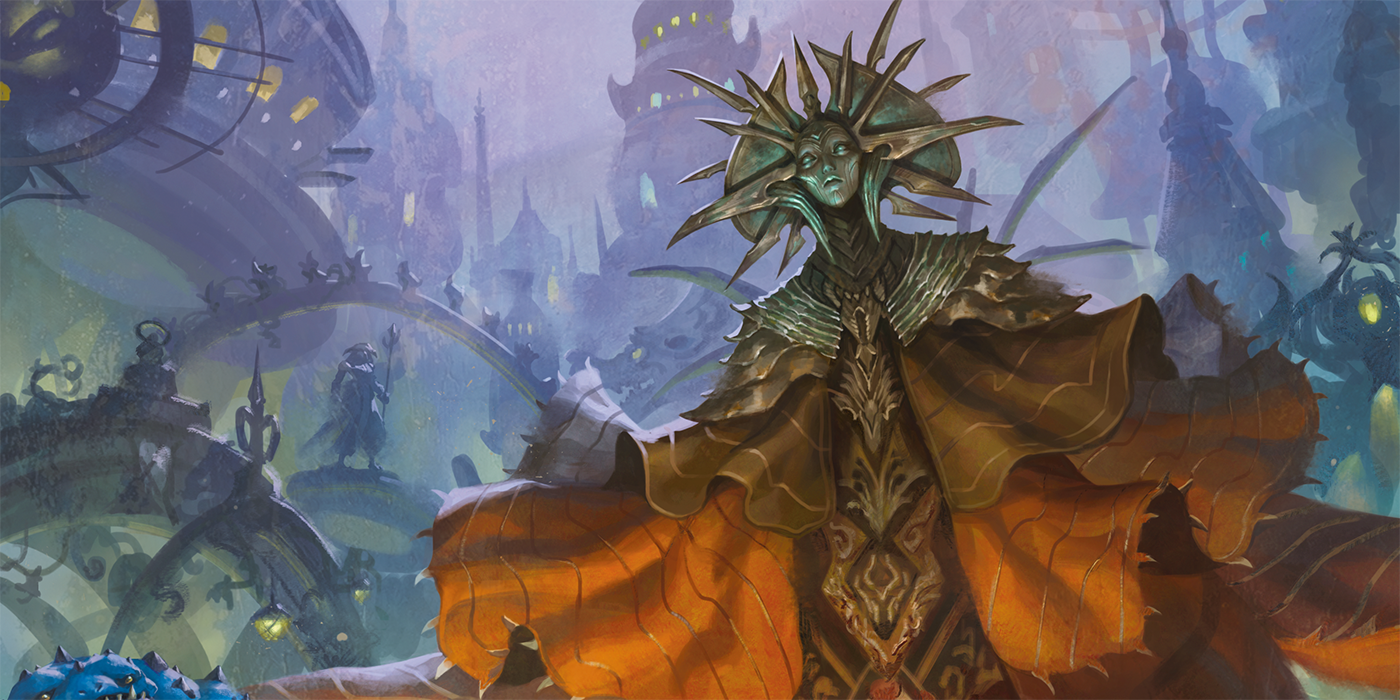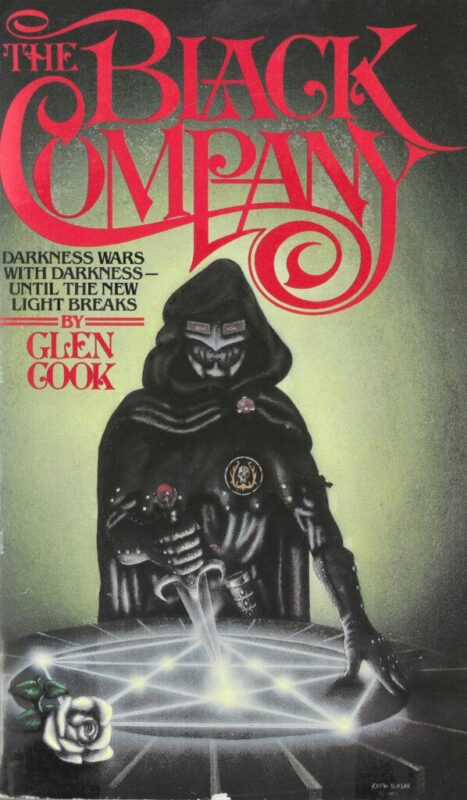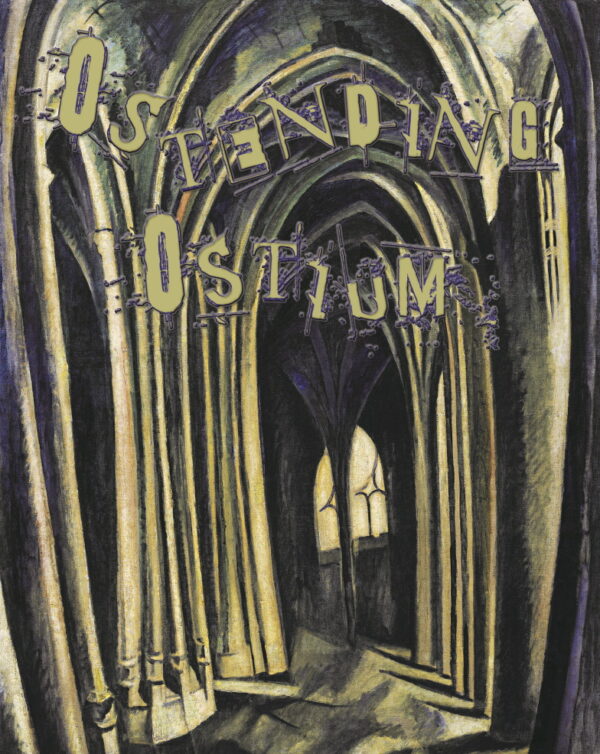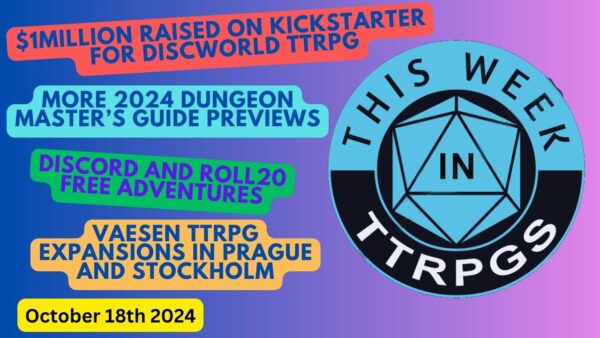
Chris Perkins and James Wyatt dig into the 2024 Dungeon Master’s Guide and explain some of the biggest changes to 5th Edition in the book. EN World recently had the chance to sit down with D&D creative director Chris Perkins and senior game designer James Wyatt to ask some questions about the 2024 Dungeon Master’s Guide. Over the course of the 15-minute video call, we spoke with the lead designers of the new DMG about why the adventuring day was dropped, what were some key magic items that were changed, and what the book has for veteran DMs. Most importantly, we finally found out why the Dungeon Master’s Guide changed the name of the Glorioles, a mountain range in Greyhawk. The below interview contains some edits for clarity and conciseness.
EN World: In the 2014 book, we had the recommendation of six to eight encounters. There was the Adventuring Day, XP pool, all of that went out the window. Can we talk about the decision that went into that? Why did we get rid of the Adventuring Day and there’s no clear cut replacement other than suggestion on how to keep the adventure moving?
Christopher Perkins: So what we’ve discovered over the past 10 years is that the Adventuring Day is bogus, that people aren’t actually playing with it or using it or running their games that way. And so that, in a nutshell, explains why we abandoned it. What we tried to do this time around is make sure that the advice we’re giving you and the tools we’re giving you are actually tried and true. That they’re getting used, they will be used. And so this was one of the things that we looked at and went, no. This is manifestly not what’s happening in the community right now.
There was a related question about that the loss of the adventuring day that we wouldn’t know the full impact until we see the Monster Manual because we know that the monsters have all been rebalanced. Was that a consideration as well, that the monsters have all been rebalanced, so maybe six to eight encounters a day might not be the right way of approaching it?
James Wyatt: I don’t think so. Really it’s the fact that it was not grounded in reality to begin with.
I’ve seen some discussion of the rebalancing of monsters and encounter balance as well. Characters are more powerful now, so they had to make monsters and encounters tougher now, and that’s not what’s happening. Our math was off 10 years ago and we’re trying to fix it, especially at level 10 and higher. The guidelines we gave you in 2014 were producing encounters that just weren’t challenging enough. And the monsters weren’t challenging enough. So the monsters do get dialed up a little bit. The encounters get dialed up quite a bit. And that’s all to the goal of making a fun encounter for characters at that level, whether you’re using 2014 characters or 2024 characters.
When I read through the Dungeon Master’s Guide, the biggest compliment I could give it was I wish I had the 2024 Dungeon Master’s Guide when I was starting off as a DM. It’s really geared for if you’ve never DMed a game and you read through that, you’re going to have a lot of really valuable advice. When I expressed that in my early reviews, one of the frequent questions “I’m a DM that’s run 1000 games, what do I need the Dungeon Master’s game for?” So I figured I’d just ask the two of you. What’s in this book for veterans DMs, besides the the new brand new Bastions system and of course Magic Items?
Perkins: That’s a fabulous question. So we tried to seed the entire book with things that basically are applicable to DMs of all experience levels. While experienced DMs have a lot in their heads, it’s easy for them to forget some of the tools they have in their own tool shed. And drawing attention to those things, I think, is super key. For example, sometimes a DM might be so embedded in the flow of their campaign that they forget that having a break episode once in a while is a good idea. And there are some actual suggestions of different types of break episodes that you can do. And so even the most experienced DM can look down that list and go, “Oh, you know what? I want a beach episode,” or, “I want to do a session where they’re just going to go to a carnival.” And those suggestions are outlined there.
Sometimes if a character is on death’s door, it can be very easy for an experienced DM just to roll with the death saves and keep things moving. But if the DM goes into chapter three and sees the section on death, there’s actually some interesting ideas in there to make the dying of a character more fun for the player and more interesting for the campaign. Those are the kinds of things that I hope experienced DMs will recognize and go, “Oh, I know what I’m doing, but this is a great reminder that there’s some other fun things that I can do as well.”
Wyatt: Back in second edition days, I was the kind of DM who never bought published adventures or campaign settings because I was like, “Oh, I can do all that myself.” And then I picked up the Ravenloft campaign setting box and realized, oh, there’s actually cool stuff in here. This is inspiring. And I think that’s what a lot of the DMG is going to be for folks, I hope. I mean, yes, an experienced DM can come up with their own adventures. And hopefully they’ll look at the tables of adventure seeds in chapter four and spark some ideas and go off in an unexpected direction. We poured so much of our brains into this book to share our experience with other DMs.
Along those lines, I’ve seen Chris do the DM Tips presentation a couple of times in person. And James, I’ve seen you talk about similar topics before as well. Is there a particular favorite piece of advice that you give DMs in the books for both of you?
Perkins: Yeah, absolutely. And it’s funny you mentioned the DM Tips and Tricks thing. The key bit of advice from those presentations is every DM is unique. That is, you will create your own DMing style and the way you DM is special and no better, it doesn’t have to be any better or worse than anybody else’s. It’s you. And I think that that is verbatim what we dropped in one of the early chapters of the book. James picked up that…
Wyatt: I think it’s chapter one.
Perkins:… And dropped it in. And I think if I were to call on one thing, that would be it.
Wyatt: My big talking point through much of this book is all about communication. I’ve seen my daughter and her girlfriends struggle with communicating with the other folks in their games or their campaigns go astray because they’re not communicating with each other. And I’m just like, we just have to talk to each other so much. So much DMing advice comes down to that. To the point where at one point I even tried working in some some tips for giving feedback that I’ve used in other contexts, but that didn’t make the final cut.
Let’s talk about the way you organized the book for a second, because I found that to be very fascinating. In the 2014 version, the first chapter was about world building. The first chapter of the 2024 DMG explains what a DM does, here’s how to manage a table of players. You start at a macro level on the 2014 DMG and in the 2024 version, you start at the table and build your way up. Obviously, that was a deliberate choice, but why did you make the decision literally to flip the script for this new book?
Wyatt: I think everybody recognized that the organization of the 2014 DMG was its biggest drawback. I have no shame about that. I have a lot of resentment about that. But part of that came from, I think there was an idea at the time that people don’t learn to DM by reading the Dungeon Master’s Guide. They learn by picking up a Starter Set and starting there. Well, it’s not a Dungeon Master’s Guide if it doesn’t guide you on how to be a Dungeon Master. A lot of folks have held up the fourth edition DMG as a really good example of guiding people into the game. So we tried to emulate that approach a little more.
Perkins: Yeah, when I was outlining the new DMG, I looked at the fourth edition DMG, the third edition DMG, the second edition DMG, just to see what they did. And also keeping in mind what we were doing with the Player’s Handbook and putting in the more instructional first chapter on how the game works. And making this feel like the mirror image of that book by front-loading all of the basic information about what DMing is or ought to be and saving the more creative stuff, the create your own world for the middle of the book.
View attachment Fighter Bastion_Noor Rahman.png
The DM’s Toolbox, that’s probably my favorite chapter of the book as somebody who always DMs. I absolutely love resources specifically made for the DM. And I know a lot of that stuff was in the 2014 book and it was scattered and putting it all in one place was fantastic. My immediate thought when I saw that and read through that was, of course, I want more. There’s always bits for the DMs in various D&D books whether it’s Magic Items. or subsystems for how to run a game where secrets are weaponized and things like that. But will we ever see more collections specifically made for the DM in mind in the future like the DM’s Toolbox?
Perkins: I too, like the DM’s toolbox, it is this fun grab bag, but it makes it easier to find all these stray little microsystems and things that exist at the DM’s disposal. I think anytime we do an adventure or campaign setting where we’re introducing a mini system or multiple systems, having them gathered together in a toolbox like format would be super useful and very accessible. Now, it may not work for every setting or every adventure that we do. It may not be enough content to justify its existence. But if there is, I hope that this becomes a format that we can reuse.
Moving on to the Bastion system. I thought was a really interesting mechanical system. And we’ve seen similar systems before, but one of the things I really liked about it is the Bastion system really feels like it fits within 5E in ways that others haven’t. Other systems have tried to basically fit a square peg in a round hole and the Bastion system understands this is the 5E way of doing it. Of course, is the Bastion system going to stand alone? Or when we see the Forgotten Realms guide or something like that, will we see Bastion buildings, Bastion facilities that are specific to different campaign settings? Is that something that is planned to grow as we enter in this new era of D&D?
Wyatt: For me, the most exciting thing about the Bastion system is the opportunities that it gives us to expand it, not just in campaign settings, but even in adventures. One of the examples we looked to a lot in thinking about this system was Waterdeep: Dragon Heist where you come into possession of a tavern and that really changes the way the adventure plays. Bastions give us an opportunity within a campaign length adventure to say, “Okay, here’s how the characters are really linked to the world in this adventure.” And how that’s going to play out over the course of the whole campaign.
Perkins: I would expect to see more Bastion material, expanding the Bastion stuff in future products. We’ll have to monitor how things are going, how players are engaging with the system. One of the most appealing things about it is D&D has had stronghold building in the past. But like you say, we really wanted to give players a juicy way of carving out a creative space. They’ve already got one with character creation. Now we’re giving them another with home base creation, and made sure it’s meaningful and is giving them meaningful benefits and it’s not a waste of their time. It’s very engaging. It’s also sweeping up a lot of the downtime stuff that had been in the system before but was not frankly getting used or implemented widely. So that’s really our dream is that this catches on. The players really dig it and they’re craving more and more options.
Along those lines, do you have any recommendations to both DMs and the players about how to maximize their Bastion experience?
Wyatt: I would say really embrace the idea that the player gets to be a little dungeon master. Not little, but you know what I mean. Gets a little taste of dungeon mastering and embrace the narrative aspects of it. Tell me the story of what happened in your bastion during this bastion turn when you gave the maintenance order, maintain order. Tell me about the interaction of the characters in your hirelings in the bastion. And then use those, build on those as a DM to make the story of the campaign richer.
Perkins: And I hope that this player engagement, too, also gives the DM a bit of an off-ramp. If the DM is feeling like they haven’t prepared much for the next session, maybe what they do is say, “Hey players, let’s come together and take a bastion turn together. You guys will tell me what’s going on with your bastion.” That experience, I hope it happens and I hope people talk about it and tell me about it.
So one last question, talking about Magic Items. What was one Magic Item that was broken in the 2014 DMG that got fixed in the 2024 DMG?
Wyatt: The Cube of Force got completely blown up and recreated. It’s now one of my favorite Magic Items where it has been really weird since the very beginning, since it was first introduced to the game. Its effects were poorly defined and not at all clear on how they were useful. It’s completely different now, but it is still a Cube of Force and I think people will actually have fun playing with it now.
Perkins: That’s a great example, James. The one I was going to pick on was some of the cards in the Deck of Many Things hinged on the idea of giving or taking away character experience points, which creates a weirdly imbalanced party. It’s very old school, but it doesn’t really work with the 5E ethos. And if you’re a DM who doesn’t use experience points, if you’re using the milestone system or a more story-based award system, it’s a meaningless draw. And so we tweaked some of the specific cards that leaned on XP so they don’t do that anymore while still making them either very scary or very fun.
Excellent. Well, that’s actually all the questions I have.
Perkins: You’re not going to ask me about Glorioles?
Oh, no. Thank you. Why’d you change the name, Chris Perkins? Why’d you change the name?
Perkins: Why indeed?
Thank you for reminding me. I knew you did that. I knew it. I knew it. Why’d you change the name of the Glorioles Mountain Range?
Perkins: I am totally responsible for that change, and you know why I changed it, Christian. You know why I changed it.
The 2024 Dungeon Master’s Guide will be released on November 12th.








